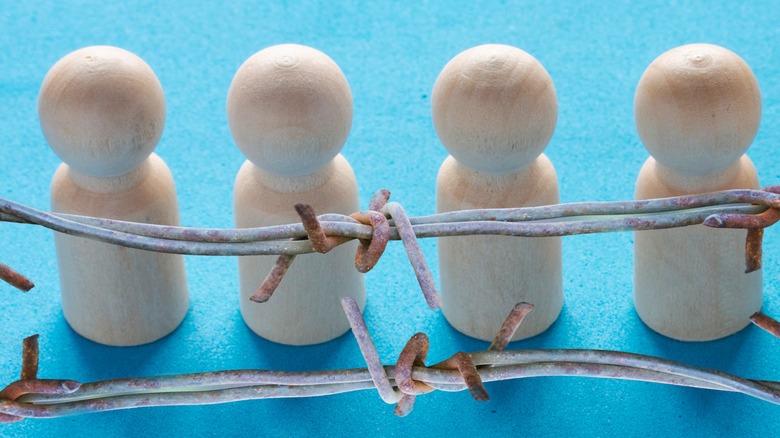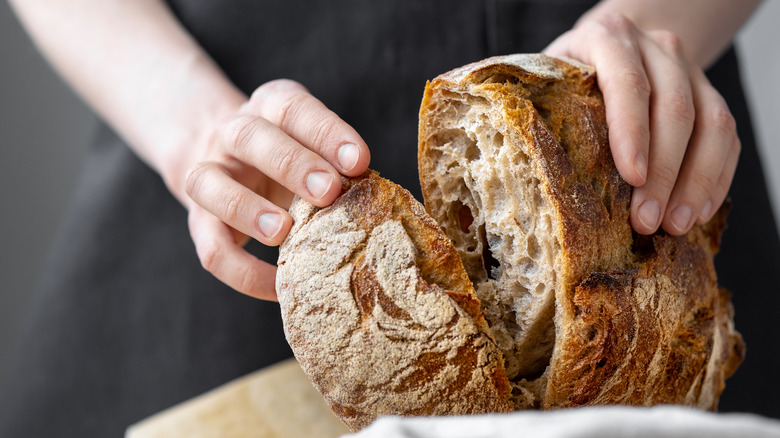POWs In Dutch Indonesia During WWII Had To Take Desperate Measures To Feed Themselves
If you were starving — truly starving, and at risk of death — what's the worst thing you'd eat to stay alive? Not everyone will have to make that decision, but it happens from time to time. Some have broken what many societies consider an ancient taboo, and eaten human flesh. Soldiers have turned to their own horses. Purdue University keeps an extensive list of the weeds, roots, and barely-edible plants — "famine foods" — that people have traditionally eaten with nothing else between them and death.
During World War II, Allied soldiers taken prisoner by the Japanese faced what the British Imperial War Museum calls "hellish conditions." Of the 60,000 British and Dutch soldiers forced as slave laborers to lay Japanese railway line between Thailand and Myanmar, 16,000 died. Little humiliations, like denying Red Cross packages to prisoners, made things worse, especially as food supplies ran short. A Dutch national who was imprisoned by the Japanese, Pieter Wiederhold, told PBS that in his camp, a whole meal might be a slice of dry bread, baked by the prisoners themselves. When the Japanese captors ran out of yeast, it looked like even their bread would disappear. But a few prisoners saved it, with a gruesome workaround.
Urine bread
Wiederhold remembers that some of these men had been chemists in their civilian life. They understood that human urine contained enough ammonia that, properly treated, would yield ammonium carbonate. Ammonium carbonate functioned like sodium bicarbonate, or baking soda: If mixed into dough, it would break down under heat, releasing carbon dioxide gas that would puff the dough up, making it an airy and palatable bread.
Eating urine is almost as disgusting as drinking it. At least, it would be under normal circumstances. These were not normal circumstances. Wiederhold wrote in his 2006 book "The Soul Conquers" (quoted in Weird Universe) that he'd already gone as far as drinking latrine water to stay alive during his captivity. Baked urine bread couldn't be worse than that.
The men set up two metal drums in the camp. The men urinated in them as the need arose, and at the end of the day the camp chemists would heat the drums, using the materials they had at hand to remove nitrogen and create ammonium carbonate. This would then be rendered, and go into the next day's bread. And the result? Not bad, Wiederhold wrote.
Before baking soda...
Urine has been strangely useful throughout human history, usually for its ammonia content (which isn't much: about 0.05%, according to ThoughtCo.). Ammonium carbonate was used for centuries, too. Chemistry World explains that it was once used as a smelling salt, to revive a person who had fainted. The strong ammonia odor is better than any alarm clock. But the chemical was also used in the same way the Dutch POWs used it, as leavening for bread and pastries. Sometimes sold as "hartshorn," ammonium carbonate was made from an oil cooked out of deer antlers (per the Los Angeles Times). That may not sound like an appetizing way to make croissants, but consider the Dutch alternative.
And urine isn't necessarily that alien to our tables. If you like rognons à la moutarde, or steak and kidney pie, you've already eaten the organ that makes urine. Lamb or veal kidneys can have a strange, foul aftertaste, even if thoroughly cooked; Serious Easts confirms that this from not being cleaned thoroughly enough — that is, it's a little taste of pee.


